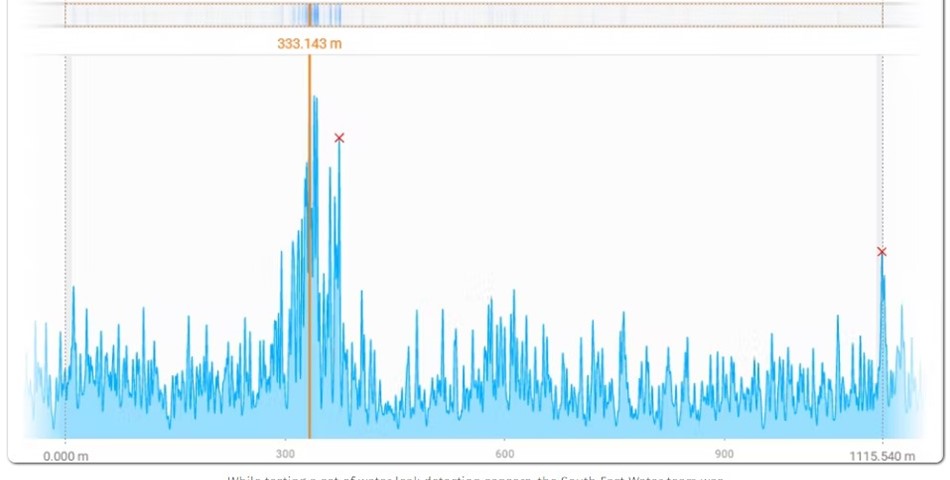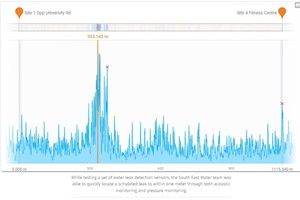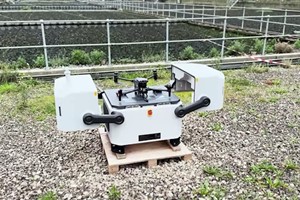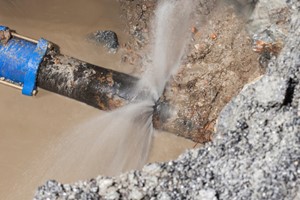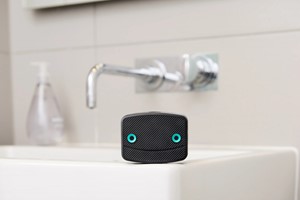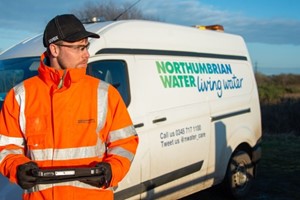The U.K.’s Southeast Water combined pressure monitoring with acoustic monitoring, analyzing this data to detect both leaks and bursts in time to mitigate them and minimize water loss.
Water has always been a valuable resource but, as the COVID-19 pandemic ushered in work-at-home models across the United Kingdom, water became even more precious as residential use spiked. For Southeast Water, the utility serving Britain’s Southeast region, per-person water use increased in 2020 by a staggering 16 percent. This, together with tightening regulations regarding water loss and service interruptions, has made minimizing leaks and main breaks more critical than ever.
Reducing leakage and preventing breaks was already a priority for the utility. Southeast Water has set a goal of reducing the amount of water lost, both on its network and in customers’ homes, by 15 percent by 2025. The utility has equally ambitious goals for increasing operational efficiency and minimizing service interruptions for its 2.2 million customers.
Achieving these goals is a tall order given the scope and complexity of the Southeast Water network: it comprises 9,000 miles of pipe, delivering 520 million liters of clean water every day, drawing supply from more than 250 boreholes, six rivers, and six reservoirs.
Data-Driven Strategy
Recognizing that pressure transients are a major source of damage to pipes and other network assets, leading to leaks and breaks, Southeast Water began pursuing a network calming initiative in 2017. This initiative focused on monitoring pressure transients in key mains. In 2021, utility managers decided to expand this initiative with a new strategy that combined pressure monitoring with acoustic monitoring, analyzing this data to detect both leaks and bursts in time to mitigate them and minimize water loss.
A key goal of this strategy was creating a smart network where pressure and acoustic data could be analyzed in real time, enabling rapid, actionable alerts of potential leaks and bursts and their locations — while minimizing false alarms and the need for continuous human monitoring.
Putting it to the Test
In partnership with the utility’s monitoring technology partner, Syrinix, Southeast Water initiated a proof of concept pilot to assess how intelligent pressure monitoring technology could improve both leak detection and burst detection.
Syrinix provided its latest generation of monitors to the utility. The company’s compact, simple-to-use system combines standard pressure monitoring with acoustic monitoring to support both leak detection and network calming. The system’s detailed monitoring data is then sent in real time to the company’s cloud-based RADAR platform for analysis.
The pilot called for monitoring a stretch of water main running alongside a busy road into a town. Three monitoring sites were selected, covering a total distance of 1,376 meters.
At each location, a Syrinix monitor was installed in an existing fire hydrant. The monitors’ built-in network time protocol (NTP) clock synchronization facilitated accurate global position system (GPS) locations without requiring site modifications. The three units were installed as a string to confirm the distance over which the leak noise could be observed and to assess the performance of using GPS time-synchronized correlations with NTP.
Triangulating Leak Locations
Daytime and nighttime leak simulations were deployed to test the system’s leak detection performance. Typically, correlation times are taken at night or in the early morning hours when ambient noise levels are low. However, the Syrinix monitors are designed to provide acoustic monitoring during daytime hours as well. This enables semi-permanent monitoring and surveys to meet the utility’s needs. Acoustic monitoring is performed periodically, while pressure monitoring is continuous.
The Southeast Water team conducted a daytime test, opening a hydrant to simulate a leak at 11:45 a.m., when busy road traffic was observed. The monitors generated the hydrophone data that enabled them to locate the simulated leak to within one meter (a little over half a mile).
In opening the hydrant, the Southeast Water team also triggered a pressure event on the valve opening. This was also captured by the monitors — a valuable finding to support network calming efforts and burst detection.
Real-time data from the three Syrinix monitors are analyzed by the RADAR software to triangulate the source location of the event created by the leak. Triangulation is achieved when a transient event is detected using two or more sensors, each offering a precise time-data point. With an integrated GPS receiver recording each monitor’s position, an algorithm is applied to the data, pinpointing the event’s location and immediately alerting the utility.
Valuable Insights
“Having the ability to monitor for transients and to locate leaks using the hydrophone technology could drive some real efficiencies in leakage detection,” says Julia Ford, leakage optimization program manager for Southeast Water.
In addition to reducing the risk of water loss, the insight provided by intelligent monitoring can help the utility meet its outcome delivery incentives (ODIs), including one for service interruption. Interruptions lasting longer than the specified time can result in a financial penalty in addition to the obvious impact on customer satisfaction.
Analyzing network activity over time also provides a level of situational awareness that can be extremely valuable. Network operators now have insight on events both large and small that help provide a better picture of overall network health.
Expanding the Project
Based on the success of the pilot, Southeast Water has now given the green light for expanding its monitoring program. The utility has engaged Syrinix to perform a four-month program to survey key network assets targeted for replacement. The Syrinix team will deploy monitors in key locations selected in collaboration with Southeast Water. The monitors will collect data in two-week intervals before being relocated to different points of interest to monitor transient activity. The project is expected to encompass 30 or more mains.
In addition to pinpointing any leaks that may have escaped detection, the project aims to provide Southeast Water with an analysis of transient patterns to support objective assessments of pipeline conditions. These new data-led insights could help inform decisions on the priority and urgency of asset replacement, or to see whether replacement could be deferred for some assets without posing additional risk.
Southeast Water is proud of its record of hitting leakage targets year after year. With water demand growing, the potential for tighter ODIs in the future and rising costs for network repair and upgrading, adopting intelligent network monitoring is a strategy that makes sense today and for the future.
“At Southeast Water, we prioritize protecting the environment for future generations and providing quality services to our community,” says Ford. “Our pilot study in 2021 proved that identifying leaks and addressing the root cause was possible. We achieved a 1.9 percent improvement on our previous year’s leakage levels and are confident, by employing intelligent monitoring technology on a larger scale, we can finish even stronger this year.”



